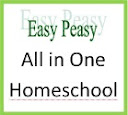I am insisting that my son reads before he starts school. I want him to have a basic and logical understanding of the English graphophonic system. More importantly, I want him to be able to navigate the communicative skills involved in literacy: reading and writing. However, even before he is able to do this, there are things I can do to prepare him for reading. Obviously, teaching letters and their sounds is important, but what else?
Well, for us, we will be working on phonemic awareness.
So, what is phonemic awareness?
The accepted definition is the ability to hear, identify, and manipulate units of sound within spoken words.
What are some examples of phonemic awareness?
Some examples of phonemic awareness are initial sound segmentation (telling the first sound in a word), final sound segmentation (telling what sound is at the end of the word), complete segmentation (saying each sound in a word), syllabification, rhyming, onset-rime activities, blending words, sound deletion, sound addition, sound substitution, sound matching in all word positions (initial, final, rimes, and medial).
How is it different from phonics?
As I it was explained to me, "You can do phonemic awareness in the dark." It only involves the spoken word; whereas, phonics involves linking the spoken sounds with their written representations. It is the examination of letter and sound relationships. It delves into the letters and patterns that make the sound.
Why is it important?
Well, put simply, it is difficult to examine letter and sound relationships without the ability to effectively understand what one hears. Segmenting, rhyming, syllabification, phoneme substitution and phoneme addition help with spelling tremendously by helping children the develop the ability to hear and therefore represent all of the sounds. These skills also help children spell by relating patterns once phonics skills are developed. These blending, rhyming, and syllables help students to sound out unfamiliar words.
So what does this mean to someone teaching a beginning reader?
Well, I cannot speak for all children, but I can tell you what I am doing with my son. We will be working on letters (one or two a week). You can see what we do in the sidebar of the blog under Lessons for Baby. We work on initial sound identification and segmentation with the object boxes. We do a lot with alliteration. Something to remember is that you have to work with YOUR OWN child. My child cannot produce the sound for R or L so I won't be introducing those letters until he can. Additionally, for him P and F sounds are interchangeable so I won't be covering those sounds around the same time. Below is a resource for helping children to better pronunciation.
Source: mommyspeechtherapy.com via Daya on Pinterest
We work on syllables by clapping them. I also say two syllable words slowly, have him repeat. Then I say it at a normal speed, having him repeat it. Eventually, I won't have to say it fas for him.
We work on blending in much the same way. I say the word long and drawn out (very legato and connected, do not disconnect the sounds). Then he repeats. Then I say it at a normal speed and he repeats it. Eventually, I will not have to say it fast for him. The next step is to do the activity separating the onset from the rime, going through the same process. Finally, I would give the child a completely segmented word. Later, my son will learn to segment words and blend multisyllabic words.
We will also be working on learning about rhyming words. We will use nursery rhymes that have rhymes that go along with the short vowel sound with which we have been working. We will also rhyme body parts and objects in the environment. I will start by letting him choose the object and I will provide the rhyme. We will use the same objects for a while then once he has the concept, we can move to other objects. You can use object boxes for this as well (but you can use pictures if you don't have objects.)
Source: curry.virginia.edu via Daya on Pinterest
We will be starting with alliteration, rhyming, blending, and syllables, but here is a wonderful resource that provide wonderful phonemic awareness activities:
For more on teaching reading, here is another wonderful resource:
Source: succeedtoread.com via Daya on Pinterest
For free literacy centers:
Here is another great resource on phonemic awareness.
nursery rhymes and phonemic awareness
another good link to explain
























0 comments:
Post a Comment